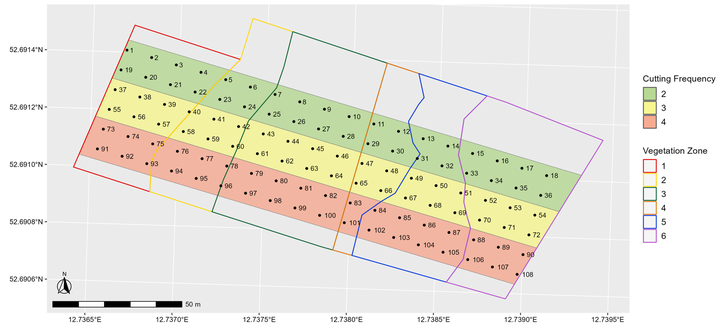Light use efficiency in grassland in relation to vegetation composition and cutting

About Werner Engelskirchen
Contact:
About the project
The majority of grassland areas are subject to complex interactions of abiotic and biotic factors, including soil structures, air and precipitation conditions, macronutrients, and micronutrients. However, the incidence of light is the essential factor for photosynthesis and thus for the growth of plant organisms. How plants can optimally use the incident light and reach their maximum photosynthesis rate depends on various factors, such as intensity of the intercepted light, prevailing temperature, or carbon dioxide concentration. In addition to these essential factors for photosynthesis, management schemes such as cutting frequencies or field-related compositions of vegetation influence the efficiency in which grassland species use the light. The aim of this work was to investigate how vegetation composition and cutting frequency measured in a grassland site in Paulinenaue (near Berlin, Germany) affect the overall light use efficiency of the grass canopy. For this purpose, information in the form of several measurable variables like leaf area index, plant dry biomass, intercepted radiation and species occurrence were evaluated. The values originate from a dataset of 108 plots collected over one growing season in 2021. The obtained data was collected during three intervals ranging from May to September 2021 and sorted into several groups according to cutting frequency and vegetation composition. The results of this work indicated that light use efficiency is directly affected by the frequency in which the grassland fields are cut as well as by the vegetation composition. A cutting frequency of three cuts yielded the highest light use efficiency values compared to the two other evaluated cutting frequencies. In addition, it could be demonstrated that in two of the six studied vegetation zones, light use efficiency values where significantly higher than in the four remaining zones.
Location
University of Bonn, Germany
Period of collaboration
From Feb-Sep 2022
Supervisors
- First Examiner: Dr. Thomas Gaiser
- Second Examiner: Dr. Bahareh Kamali